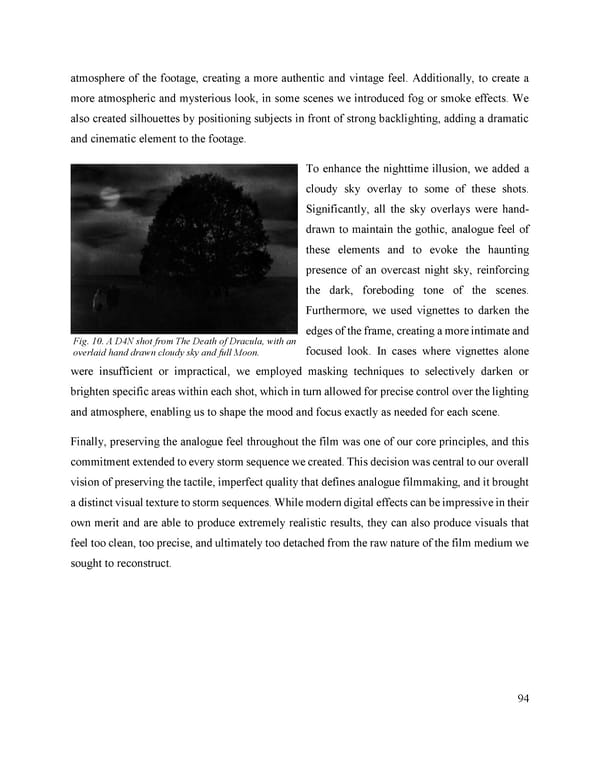atmosphere of the footage, creating a more authentic and vintage feel. Additionally, to create a more atmospheric and mysterious look, in some scenes we introduced fog or smoke effects. We also created silhouettes by positioning subjects in front of strong backlighting, adding a dramatic and cinematic element to the footage. To enhance the nighttime illusion, we added a cloudy sky overlay to some of these shots. Significantly, all the sky overlays were hand- drawn to maintain the gothic, analogue feel of these elements and to evoke the haunting presence of an overcast night sky, reinforcing the dark, foreboding tone of the scenes. Furthermore, we used vignettes to darken the edges of the frame, creating a more intimate and Fig. 10. A D4N shot from The Death of Dracula, with an focused look. In cases where vignettes alone overlaid hand drawn cloudy sky and full Moon. were insufficient or impractical, we employed masking techniques to selectively darken or brighten specific areas within each shot, which in turn allowed for precise control over the lighting and atmosphere, enabling us to shape the mood and focus exactly as needed for each scene. Finally, preserving the analogue feel throughout the film was one of our core principles, and this commitment extended to every storm sequence we created. This decision was central to our overall vision of preserving the tactile, imperfect quality that defines analogue filmmaking, and it brought a distinct visual texture to storm sequences. While modern digital effects can be impressive in their own merit and are able to produce extremely realistic results, they can also produce visuals that feel too clean, too precise, and ultimately too detached from the raw nature of the film medium we sought to reconstruct. 94
 Lost Analogue: Exploring Film, Music, and Interdisciplinary Methods in Education Page 94 Page 96
Lost Analogue: Exploring Film, Music, and Interdisciplinary Methods in Education Page 94 Page 96